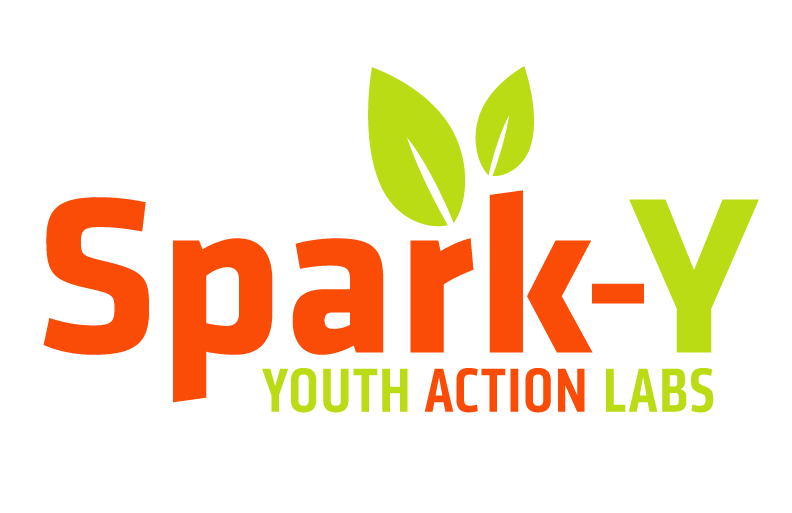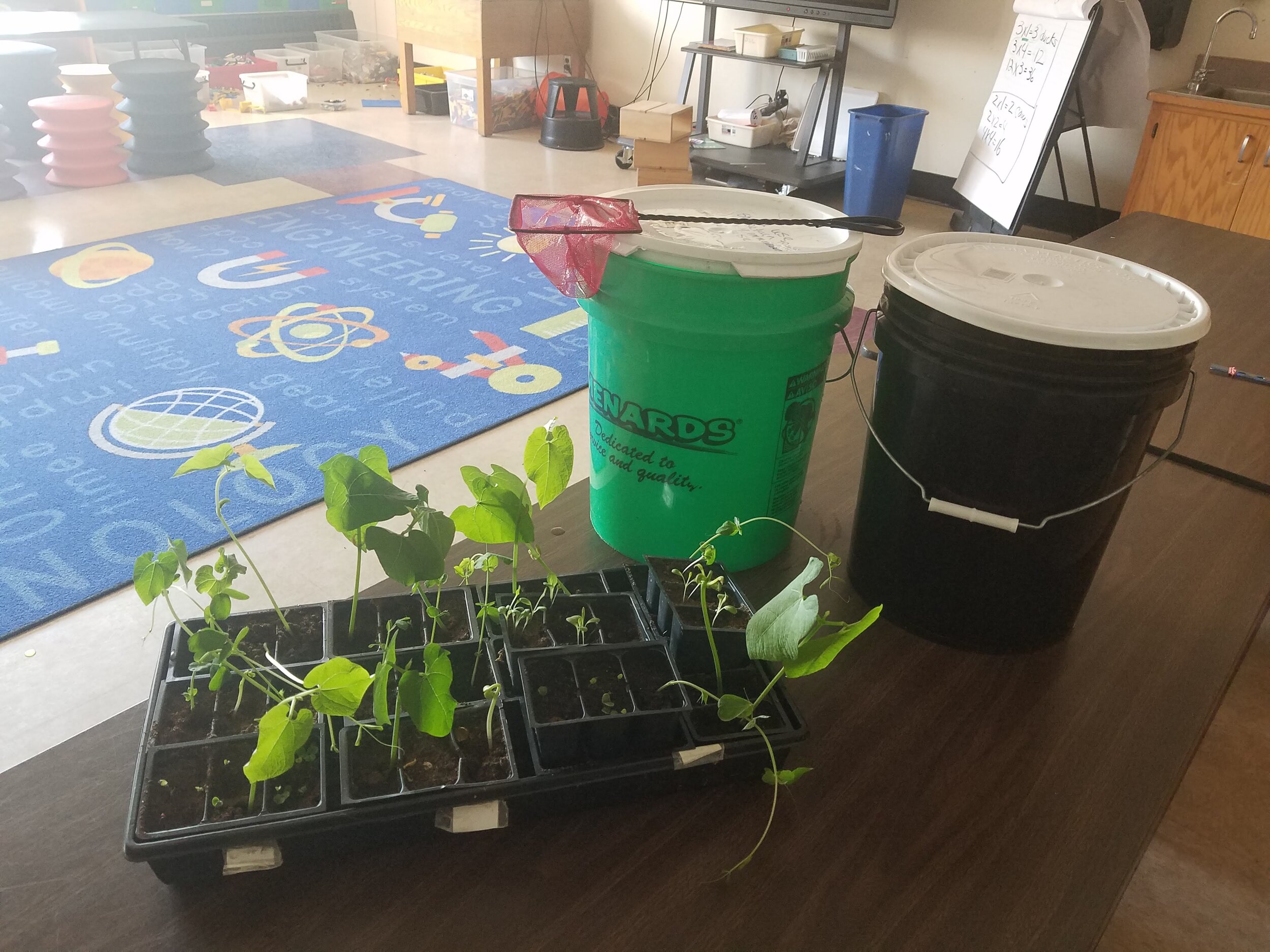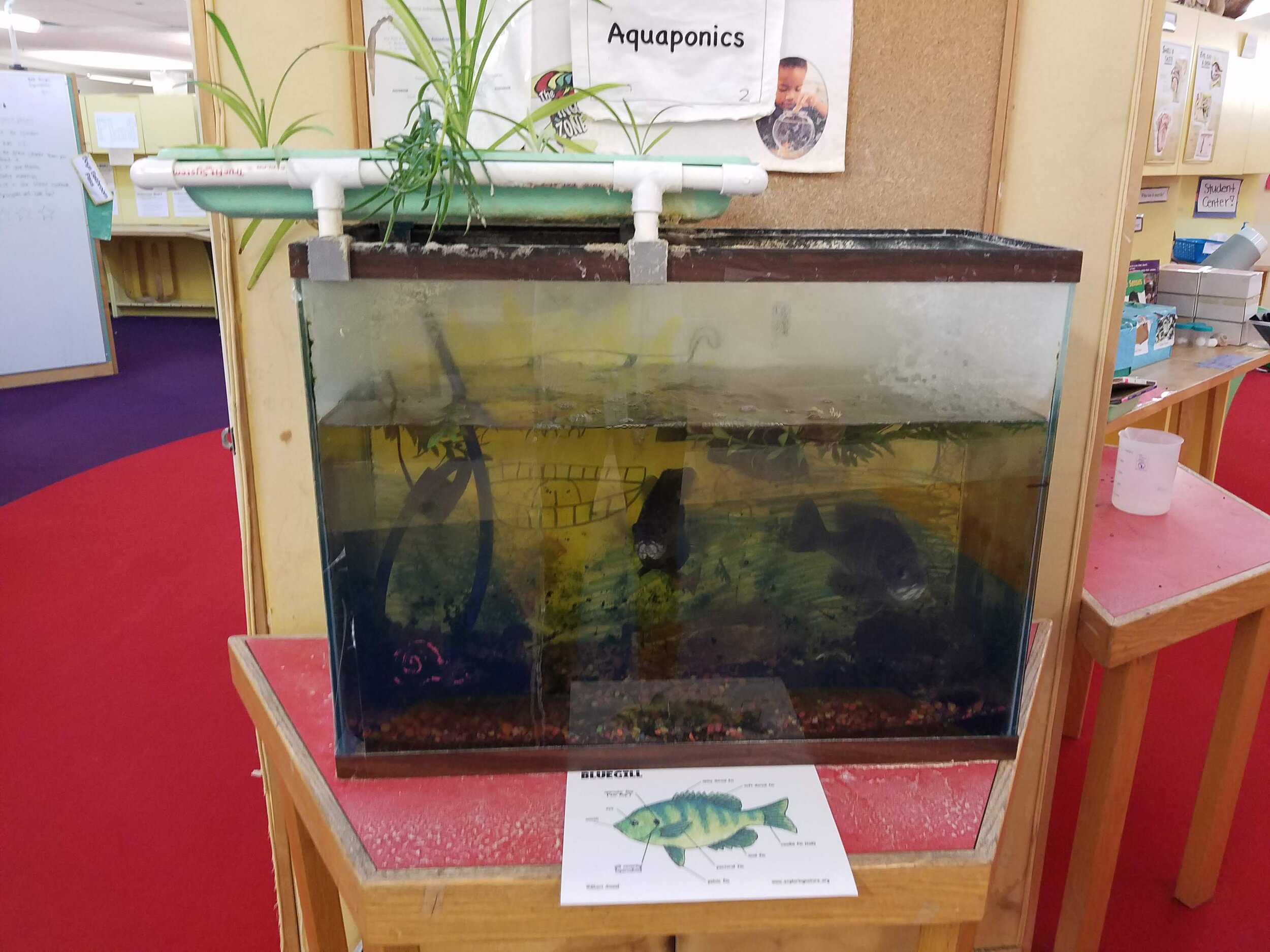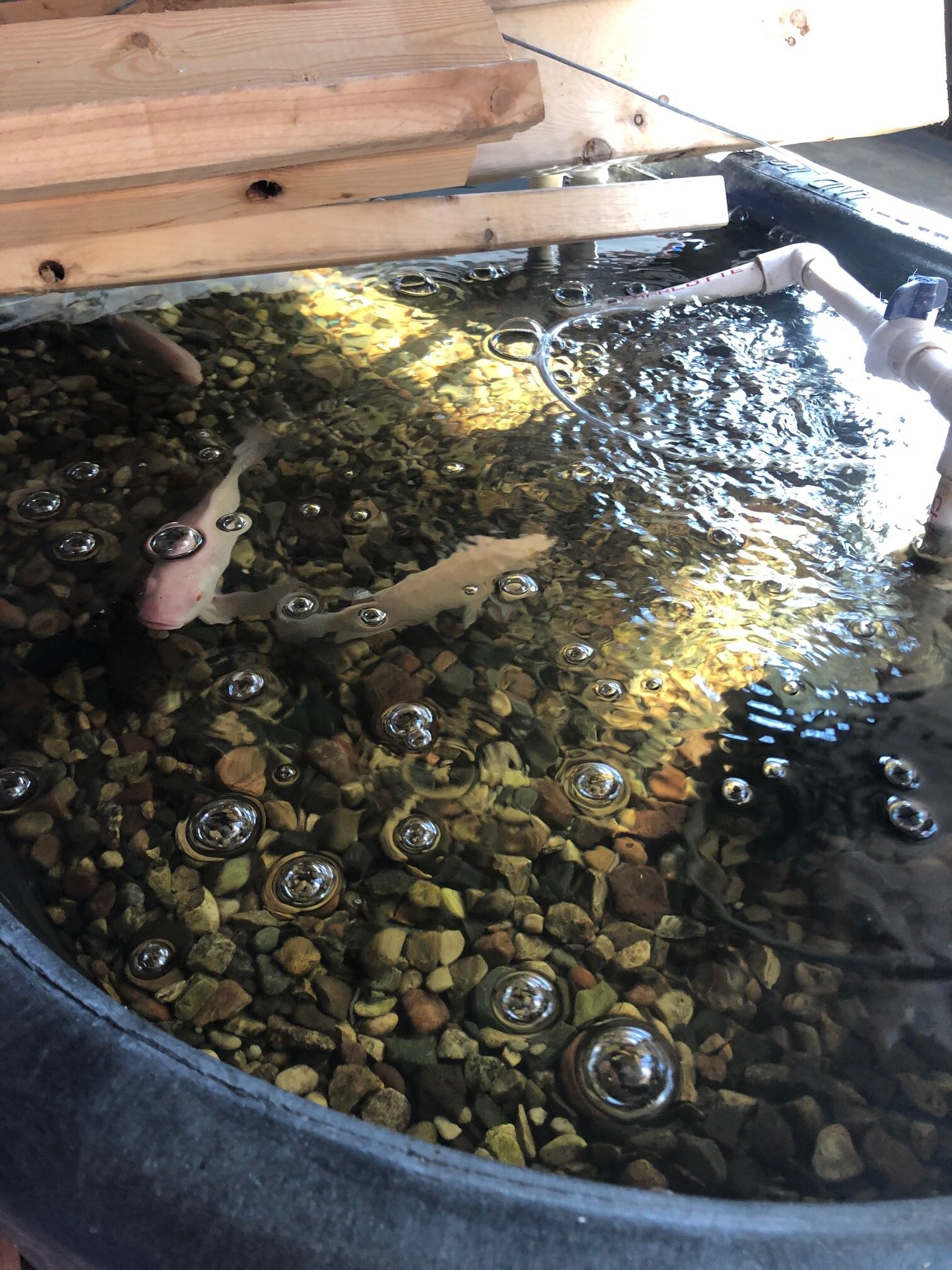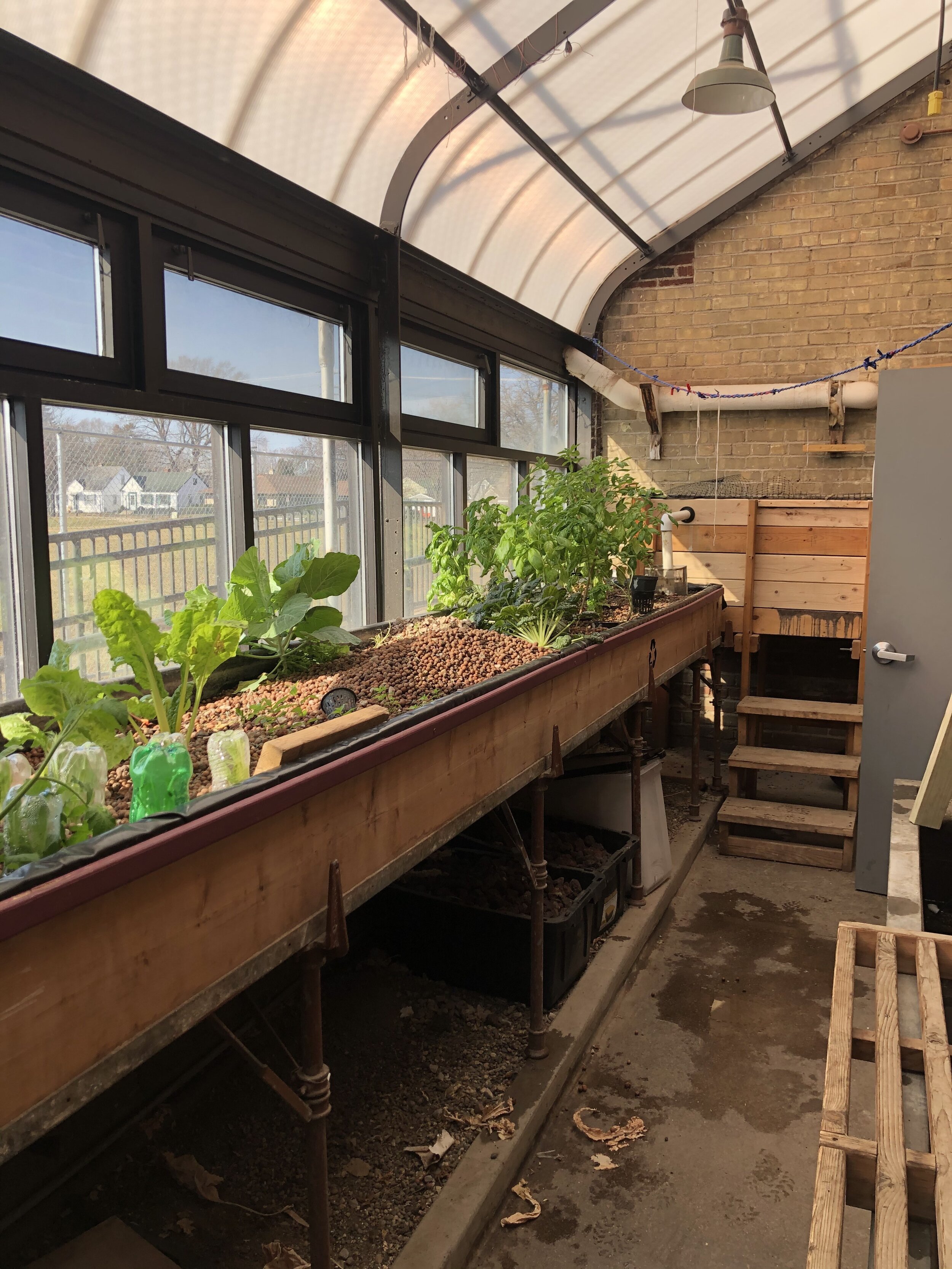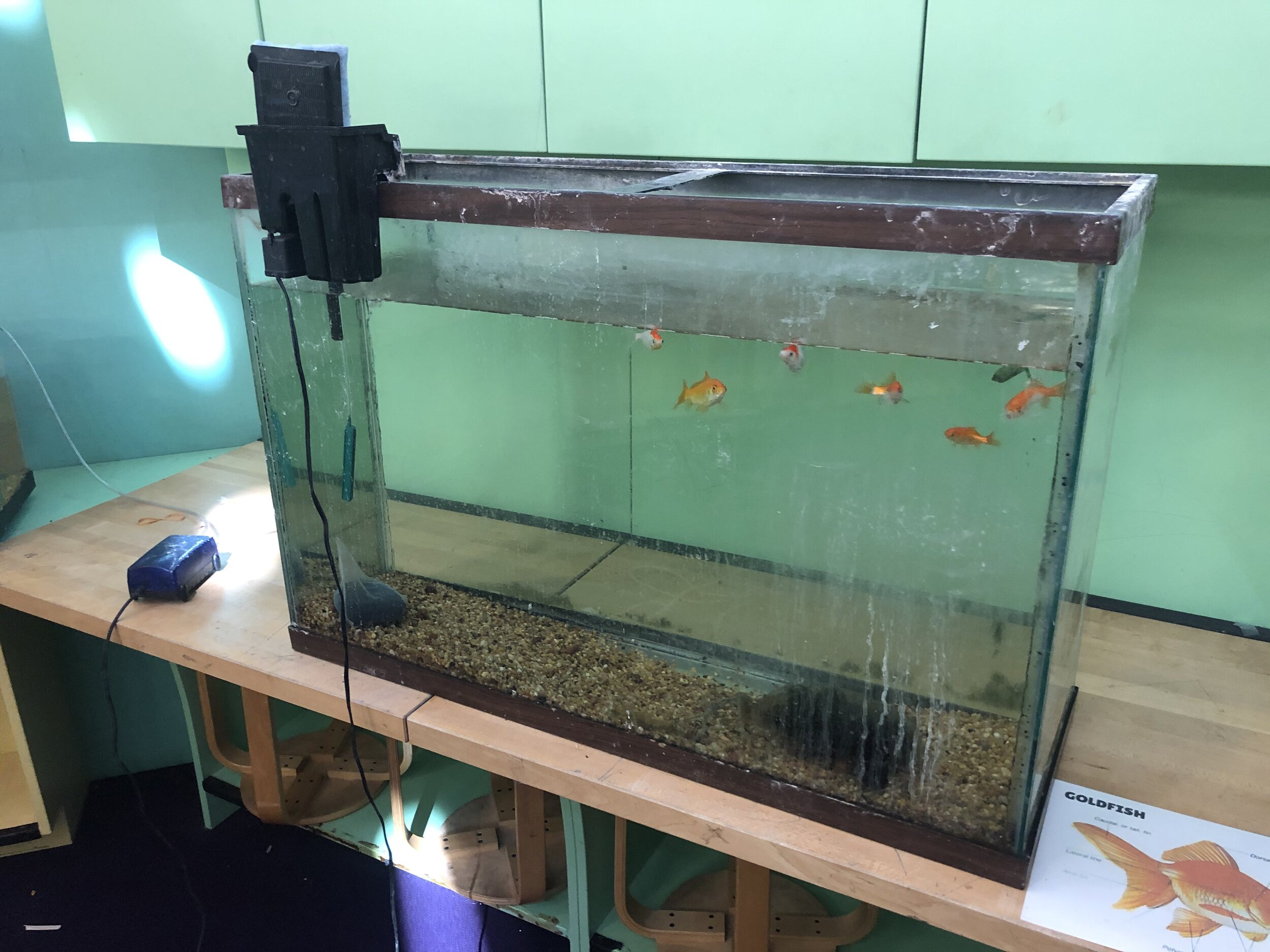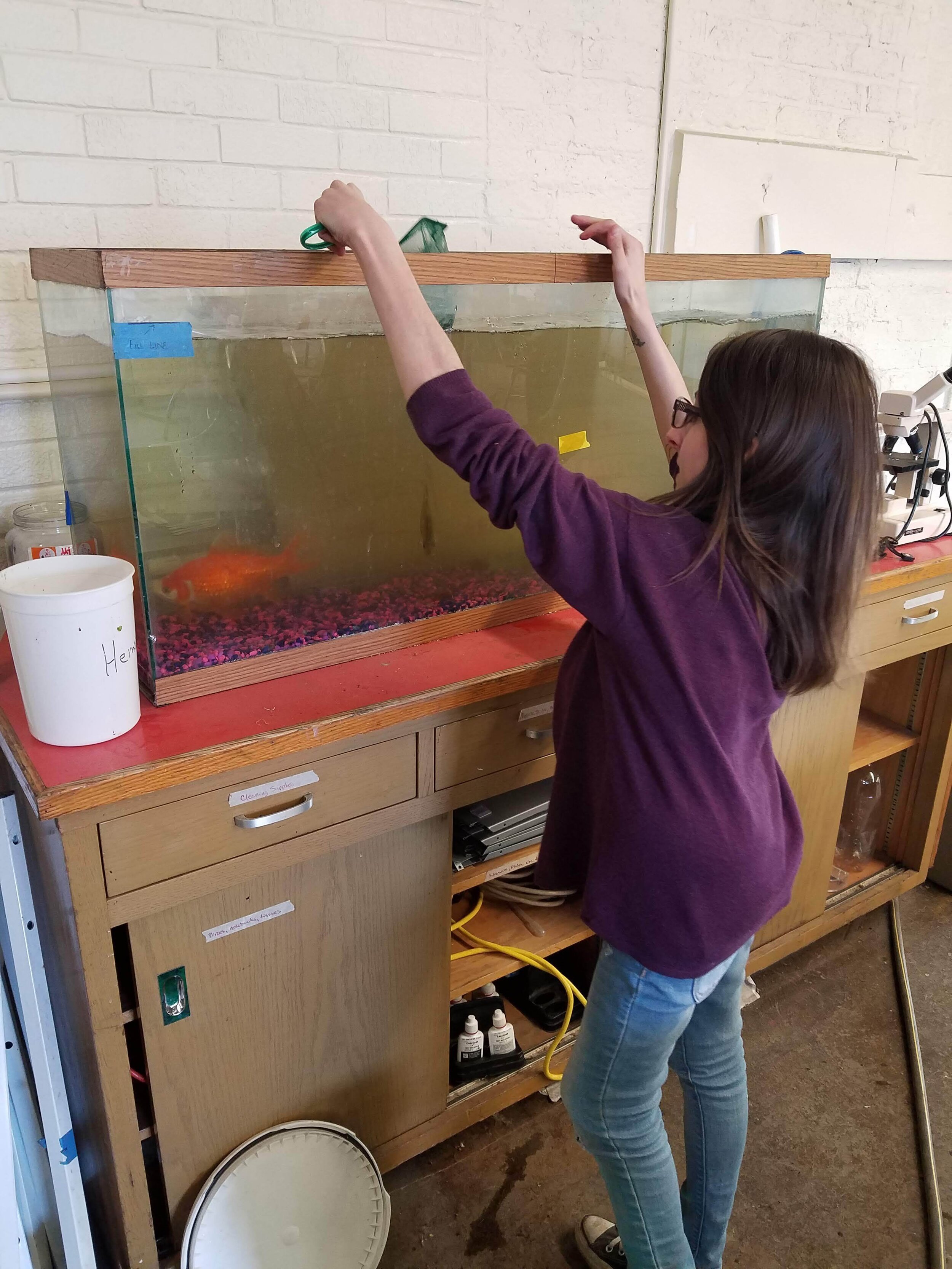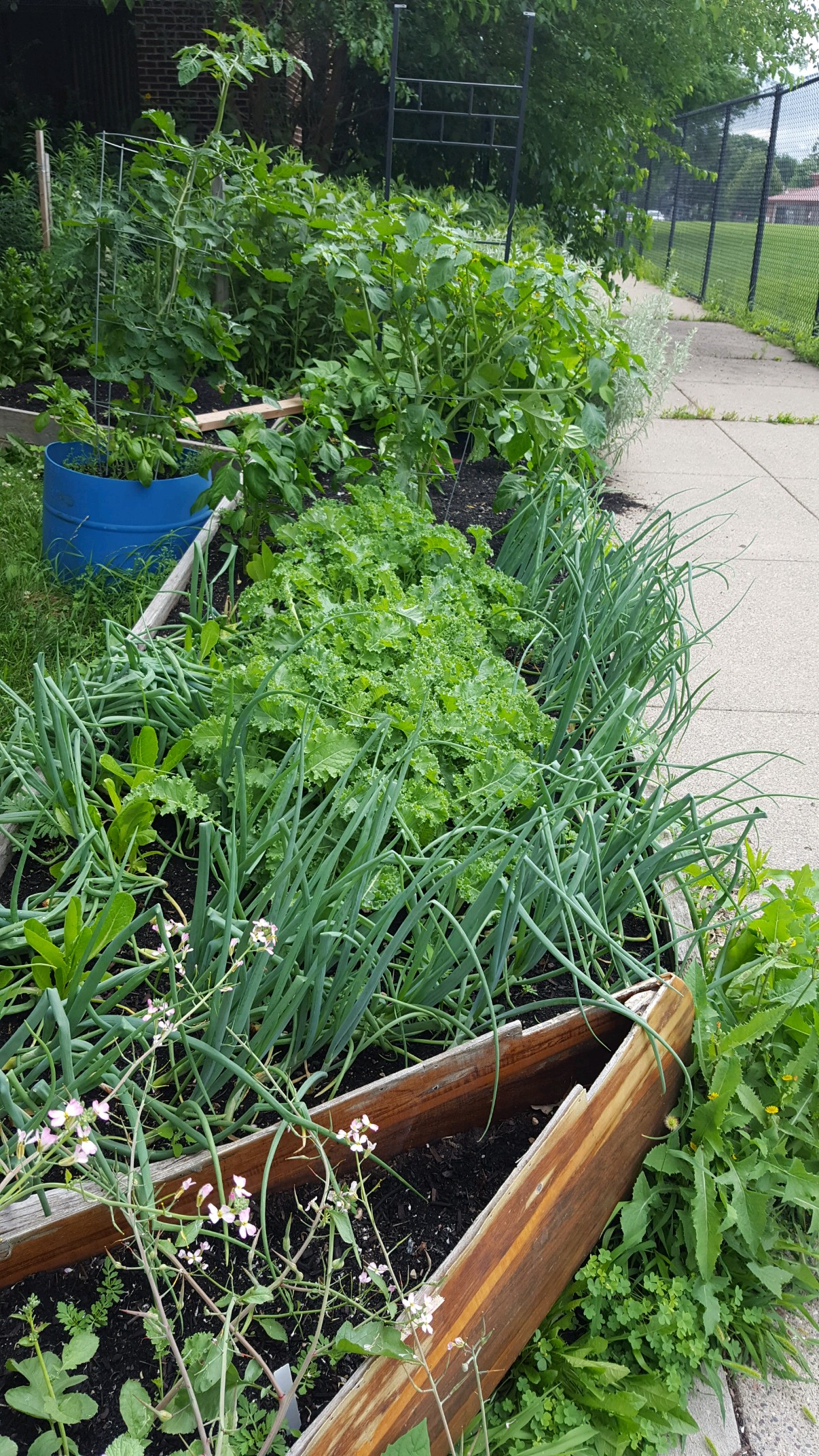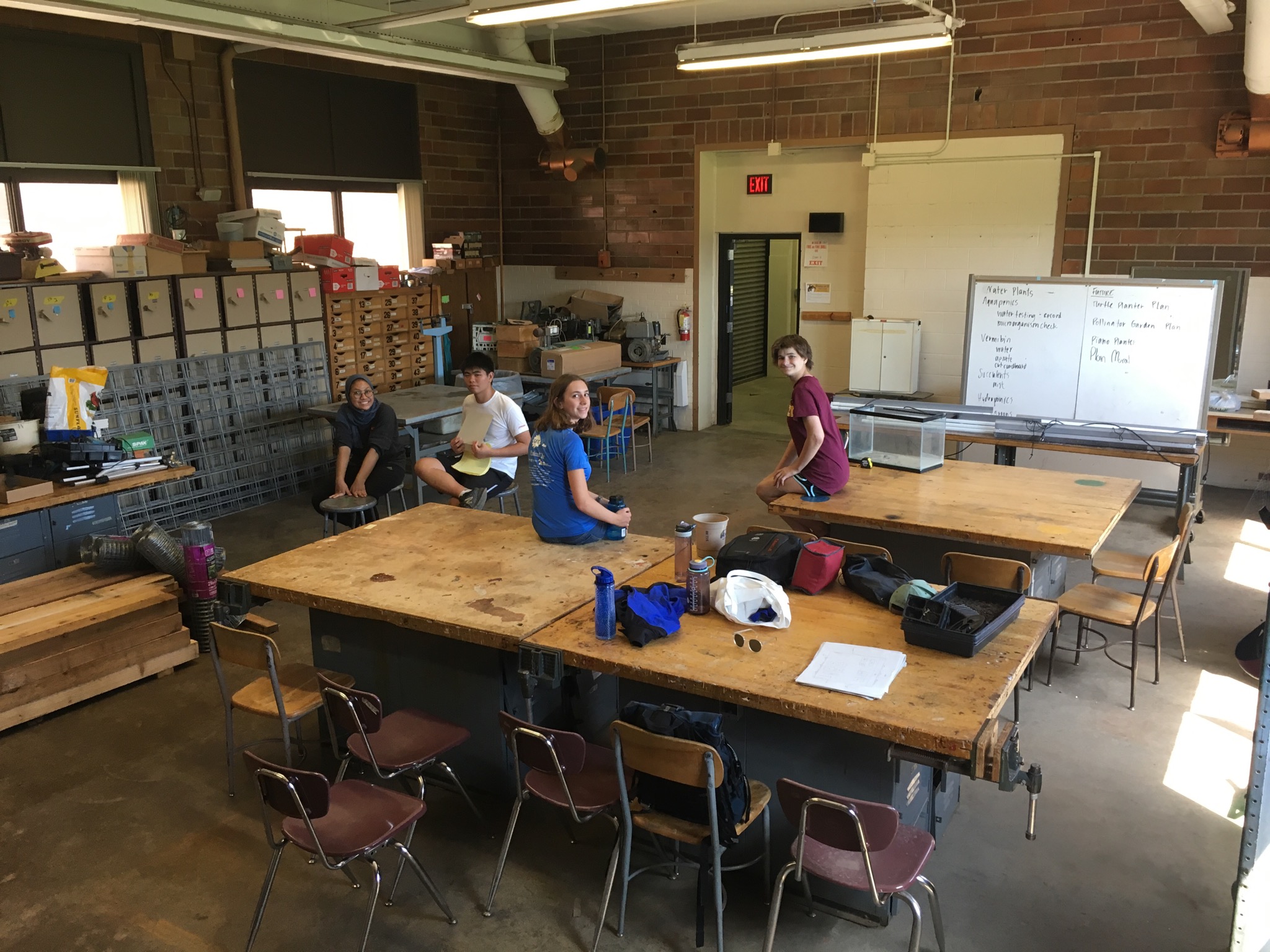Spark-Y’s summer internship program provides hands-on engagement opportunities for High School students where they can experience and learn about sustainability, professionalism, and teamwork under the mentorship of Spark-Y Apprentices and full time staff. In the beginning of July this summer, our group came together to form the Community Education team. Our team members include Chue, our Sustainability Educator, Sam, our Sustainability apprentice, and Jaylah, Joe, Sebastian and Oliver, our Sustainability Interns. We have been working together on multiple projects such as the Mobile Innovation Lab (The Beast), the greenhouse at Roosevelt High School, and several activities centered in professional development. We want to share some of our experiences with you in this post!
The Mobile Innovation Lab, known to many students as The Beast, started out as an innovative way to take learning directly to many students in North Minneapolis. It combats the disparities and lack of accessibility that many students experienced during Covid. This summer, we, as the community education team, mobilized our team strength into supporting this amazing mobile learning bus. Joe, Jaylah, and Chue supported the Beast on the ground as a team by engaging and supporting over 60 students as they learned about coding, drones, and the scientific method. As the on the ground team, each day is a new and exciting experience. From doing pushups and sit ups as robotic drones following the codes that students wrote to watching students design and give animate life to an orange cat using the Scratch coding program, there is never a boring day on The Beast. As the capacity of The Beast is limited to 15 people, three members of our team find other outlets for supporting the Beast. Sam, Sebastian, and Oliver work on preparing for the next mobile innovation learning modules. Their continuous effort on creating material lists and activity guides has helped to prepare Spark-Y for future fun on the bus. Through our work on The Beast, we have all learned a lot about education, supervision, and project planning.
Spark-Y has partnered with Roosevelt High School since 2013, and our team responsibility this summer is to maintain and upkeep the greenhouse in front of Roosevelt High School. The purpose of the greenhouse is to provide a space for growing nutritious foods for the school and community. For the greenhouse, our team focused on improving the depleted soil in the greenhouse plant beds. One thing we did to improve the soil was take compost and put it in the two plant beds. As a team, we created a garden layout of all of the plants that are going to be planted in the greenhouse. We also designed a trellis that is going to be built and put in the green house for the cucumbers and beans that need a structure to climb on. To design the trellis, we first did some research on what other effective trellises look like. We then took inventory of the materials we had on hand. Individually, we all came up with our own designs, and then we each presented our ideas to the rest of the group. We were able to discuss the pros and cons of each design and work as a team to incorporate the best aspects of each idea into our best final design. Some other garden work that we did as a team also included removing weeds at Friendship Academy and helping maintain their gardens. We hope that all the work we do this summer will benefit Roosevelt and others in the community for the future to come. We also hope that the plants will grow in the greenhouse without any of the thrip problems that previously affected the greenhouse.
Another notable event that the entire Spark-Y team had an opportunity to participate in was several professional development days, where several guest speakers, including Spark-Y’s own Executive Director Zach Robinson, helped us improve our conflict resolution skills, write better resumes and emails, and hone our leadership and communication ability. Through these engaging sessions, our group was able to think more deeply about potential future career paths as well as cultivating our own character so that we may thrive. A large part of these presentations was a myriad of hands-on activities, including a survey to determine potential career paths, a quiz to attempt to point out aspects of a professional inter-team message, and an activity consisting of sorting problems that a team might have into what exact issue was being faced. The last of these was especially effective, as we completed it in several randomly assembled smaller teams, letting us focus more on our individual inquiries about how to resolve these potential occurrences with people who we have worked with less than our focused team groups. Overall, these speakers and the activities they brought with them were an excellent opportunity, and we are glad they came to share their knowledge and help us succeed.
During our internship most of the time was spent on working in a group to meet a goal or get a project done, giving us plenty of opportunities to increase our ability to lead and work as a team. As a team we all had a great time working with each other and expressing our creativity through the projects that we work on, using new experiences as a conduit to come together, learn to work with one another, and create something based on a plan the team had formulated. As the summer continues, we hope that our group can continue to contribute to the community around us through these projects, and keep learning about how to improve both ourselves and the world around us.
